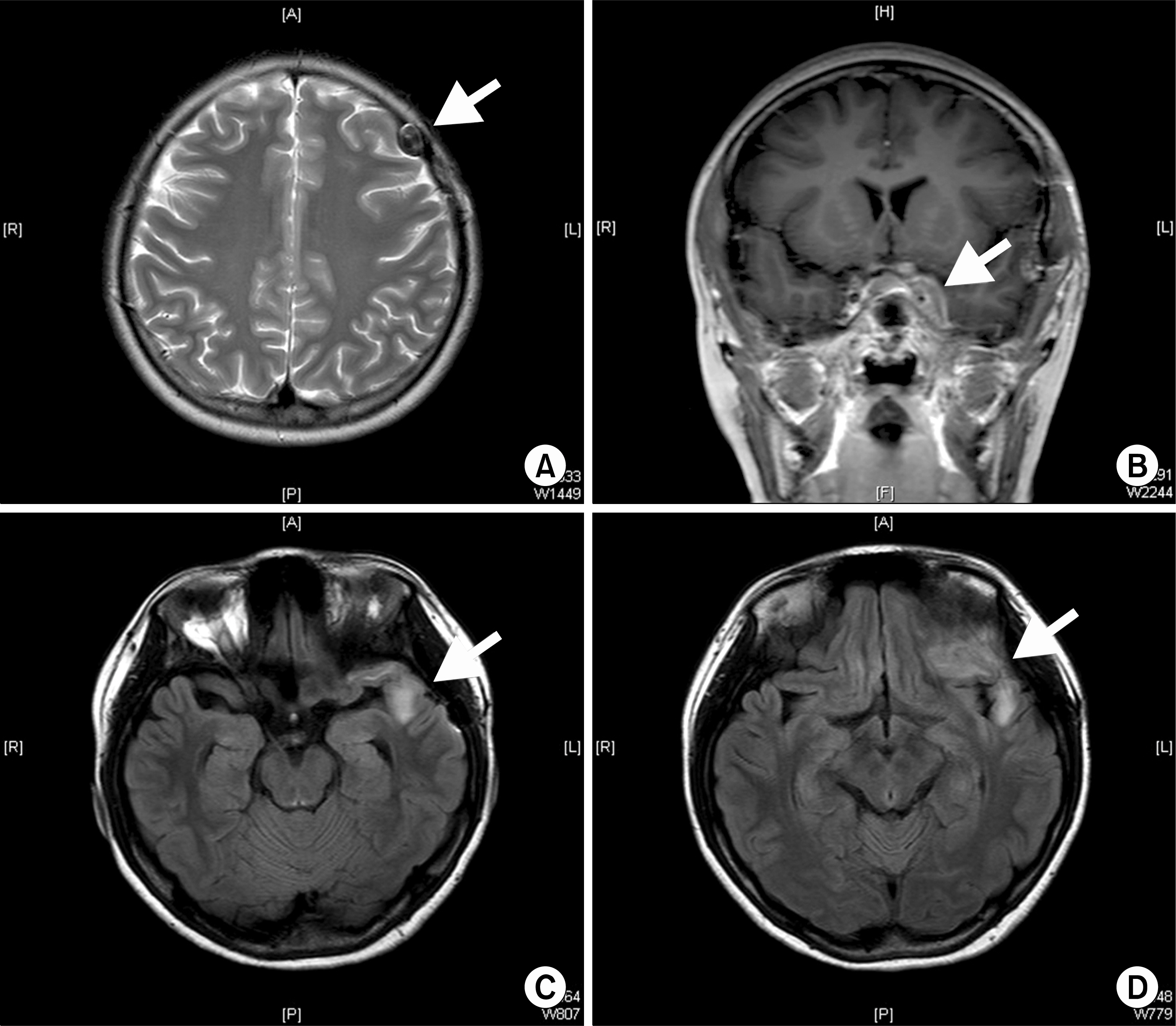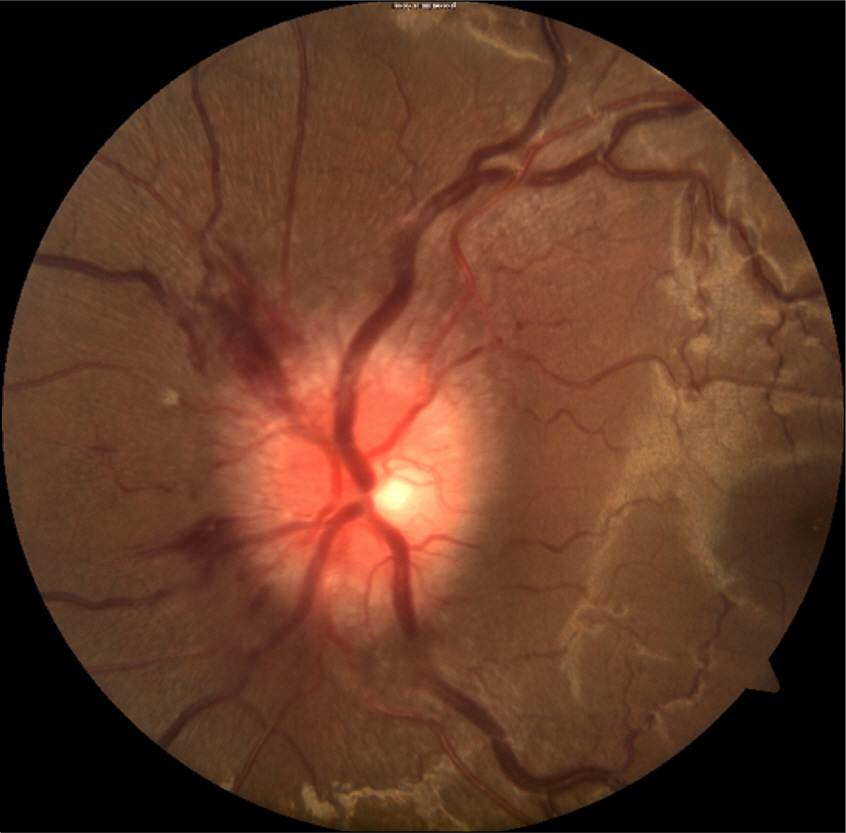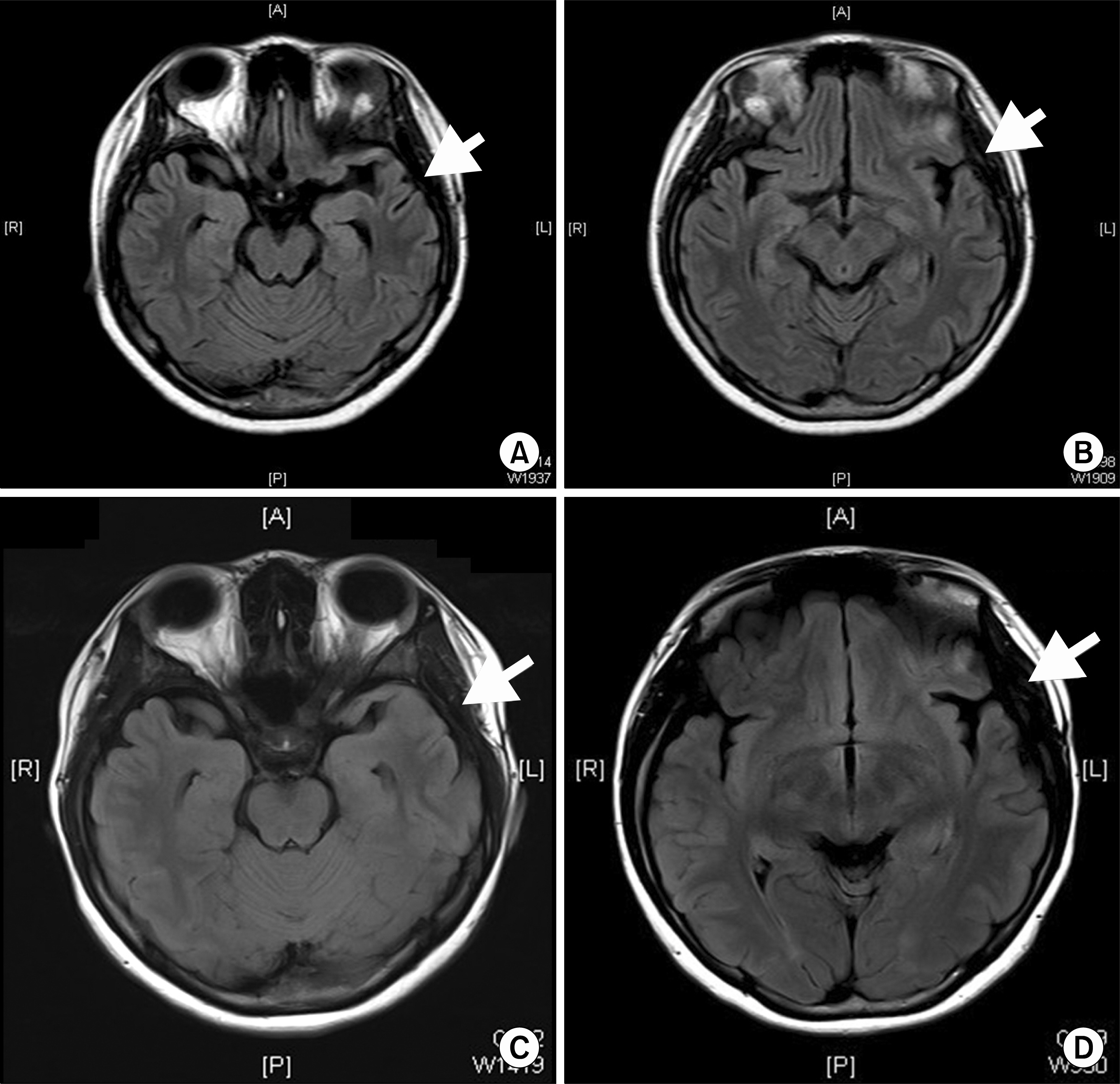J Rheum Dis.
2014 Aug;21(4):209-213. 10.4078/jrd.2014.21.4.209.
Successful Treatment of Child Neuro-Behcet's Disease with Infliximab
- Affiliations
-
- 1Department of Pediatrics, Severance Children's Hospital, Yonsei University College of Medicine, Seoul, Korea. khkim99@yuhs.ac
- KMID: 2222964
- DOI: http://doi.org/10.4078/jrd.2014.21.4.209
Abstract
- Behcet's disease is a systemic vasculitis, characterized by recurrent oral aphthous ulcers, recurrent genital ulcers, skin lesion, and ocular involvement. Monoclonal antibody to the tumor necrosis factor-alpha (TNF-alpha) is considered as a possible therapeutic approach to achieve clinical improvement, preventing relapse in Behcet's disease refractory to conventional anti-inflammatory drugs or immunosuppressive durgs. We report the use of infliximab, which is one of the TNF-alpha monoclonal antibodies, in a 17-year-old girl with Behcet's disease exhibiting severe mucocutaneous, ocular and neurological involvement refractory to standard treatment.
Keyword
MeSH Terms
Figure
Reference
-
1. Akman-Demir G, Serdaroglu P, Tasçi B. Clinical patterns of neurological involvement in Behç et's disease: evaluation of 200 patients. The Neuro-Behç et Study Group. Brain. 1999; 122:2171–82.2. Arida A, Fragiadaki K, Giavri E, Sfikakis PP. Anti-TNF agents for Behç et's disease: analysis of published data on 369 patients. Semin Arthritis Rheum. 2011; 41:61–70.3. Gijtenbeek JM, van den Bent MJ, Vecht CJ. Cyclosporine neurotoxicity: a review. J Neurol. 1999; 246:339–46.
Article4. Hatemi G, Silman A, Bang D, Bodaghi B, Chamberlain AM, Gul A, et al. Management of Behç et disease: a systematic literature review for the European League Against Rheumatism evidence-based recommendations for the management of Behç et disease. Ann Rheum Dis. 2009; 68:1528–34.5. Saenz A, Ausejo M, Shea B, Wells G, Welch V, Tugwell P. Pharmacotherapy for Behcet's syndrome. Cochrane Database Syst Rev. 2000; CD001084.
Article6. Pineton de Chambrun M, Wechsler B, Geri G, Cacoub P, Saadoun D. New insights into the pathogenesis of Behç et's disease. Autoimmun Rev. 2012; 11:687–98.7. Melikoglu M, Fresko I, Mat C, Ozyazgan Y, Gogus F, Yurdakul S, et al. Short-term trial of etanercept in Behç et's disease: a double blind, placebo controlled study. J Rheumatol. 2005; 32:98–105.8. Ohno S, Nakamura S, Hori S, Shimakawa M, Kawashima H, Mochizuki M, et al. Efficacy, safety, and pharmacokinetics of multiple administration of infliximab in Behç et's disease with refractory uveoretinitis. J Rheumatol. 2004; 31:1362–8.9. Almoznino G, Ben-Chetrit E. Infliximab for the treatment of resistant oral ulcers in Behç et's disease: a case report and review of the literature. Clin Exp Rheumatol. 2007; 25(4 Suppl 45):S99–102.10. Hassard PV, Binder SW, Nelson V, Vasiliauskas EA. Anti-tumor necrosis factor monoclonal antibody therapy for gastrointestinal Behç et's disease: a case report. Gastroenterology. 2001; 120:995–9.11. Licata G, Pinto A, Tuttolomondo A, Banco A, Ciccia F, Ferrante A, et al. Anti-tumour necrosis factor alpha monoclonal antibody therapy for recalcitrant cerebral vasculitis in a patient with Behç et's syndrome. Ann Rheum Dis. 2003; 62:280–1.12. Alty JE, Monaghan TM, Bamford JM. A patient with neuro-Behç et's disease is successfully treated with etanercept: further evidence for the value of TNFalpha blockade. Clin Neurol Neurosurg. 2007; 109:279–81.13. Leccese P, D'Angelo S, Angela P, Coniglio G, Olivieri I. Switching to adalimumab is effective in a case of neu-ro-Behcet's disease refractory to infliximab. Clin Exp Rheumatol. 2010; 28(4 Suppl 60):S102.14. Ju JH, Kwok SK, Seo SH, Yoon CH, Kim HY, Park SH. Successful treatment of life-threatening intestinal ulcer in Behç et's disease with infliximab: rapid healing of Behç et's ulcer with infliximab. Clin Rheumatol. 2007; 26:1383–5.15. Lee JH, Cheon JH, Jeon SW, Ye BD, Yang SK, Kim YH, et al. Efficacy of infliximab in intestinal Behç et's disease: a Korean multicenter retrospective study. Inflamm Bowel Dis. 2013; 19:1833–8.
- Full Text Links
- Actions
-
Cited
- CITED
-
- Close
- Share
- Similar articles
-
- Remission of Refractory Intestinal Behcet's Disease with Infliximab
- Anti-Tumor Necrosis Factor Monoclonal Antibody Treatment for Chronic Behcet's Disease: 3 Cases
- Update on the Treatment of Intestinal Behcet's Disease
- Neuro-Behcet disease presented diplopia with hemiparesis following minor head trauma
- A Case of Miliary Tuberculosis in a Patient with Behcet's Disease and Uveitis Receiving Infliximab





